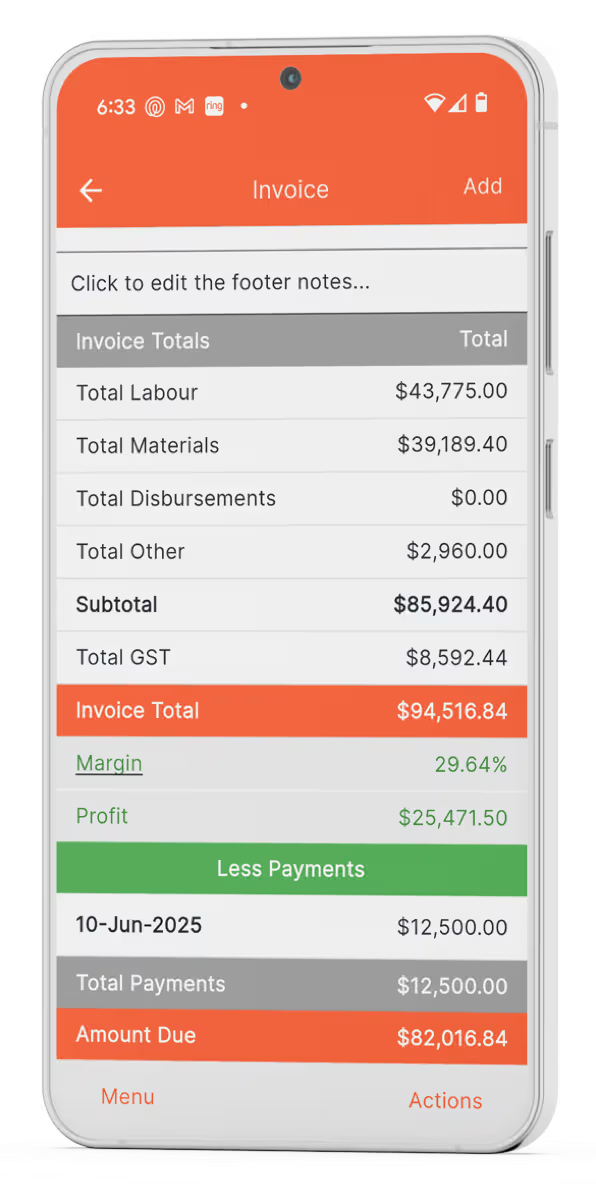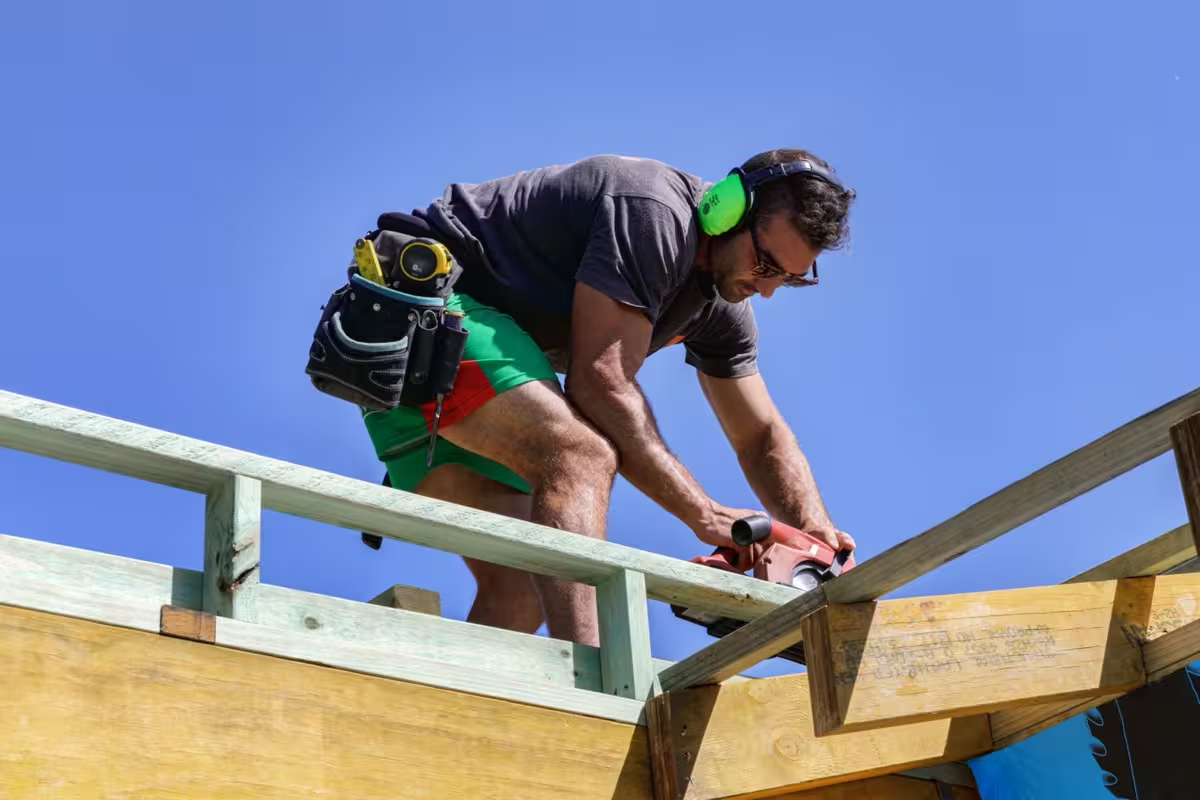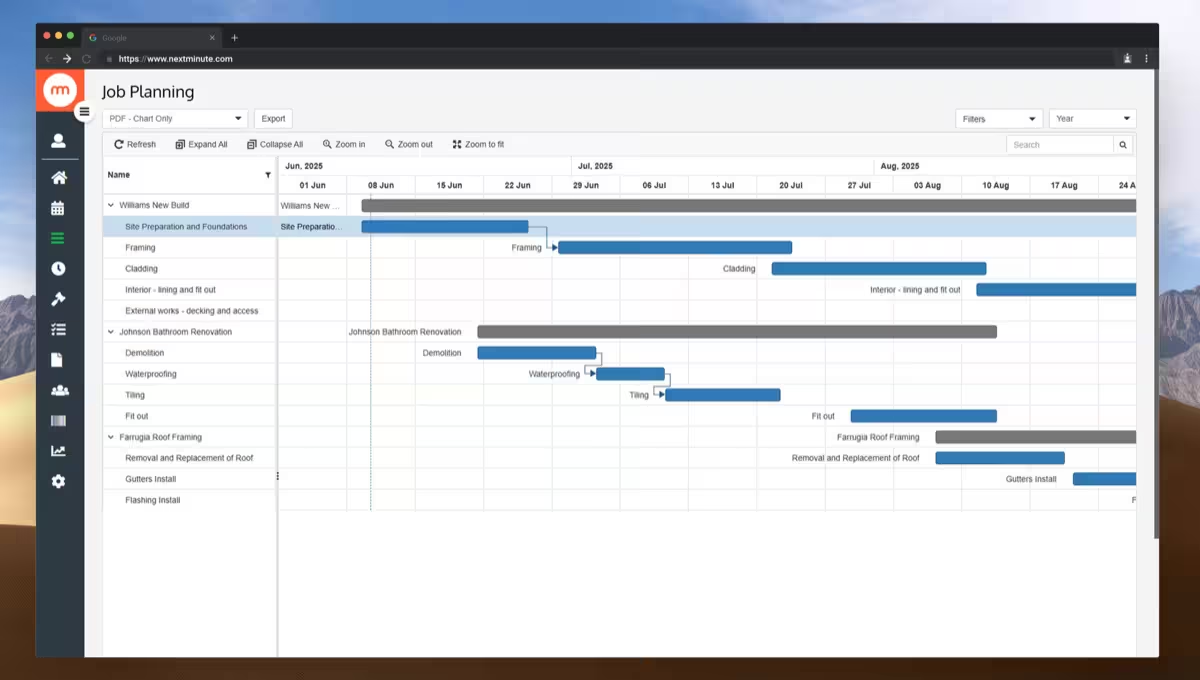Ever wrapped up a job and thought the numbers would work out, only to find you’ve barely broken even? Happens more than most would admit. Between surprise material hikes, a few extra hours on site, or that one variation that never made it to the invoice, profit can slip away fast.
That’s where cost tracking makes all the difference.
If you want to run a solid building or trade business in New Zealand, you need to know where your money’s going, while the job’s still running (not three weeks later when you’re chasing payments and scratching your head).
What is cost tracking, really?
Cost tracking is exactly what it sounds like: keeping a live view of what each job is actually costing you (labour, materials, fixed overheads) compared to what you originally quoted. And it’s not some high-level finance thing. It’s the stuff that keeps your business breathing.
At the heart of it is something every smart tradie should be doing: back costing.
Back costing is the habit of looking back at each job (or stage of a job) and comparing what you planned with what actually happened. It gives you hard data you can learn from. Done right, it means your future quotes get tighter, your margins get safer, and your business stops bleeding profit from the edges.
Why it matters now — especially in New Zealand
Let’s face it. Materials aren’t getting cheaper. Subbie rates are going up. Clients expect more transparency than ever. And if you’re not tracking your actuals during the job, you might not notice you’re losing money until the job’s already wrapped and the gear’s back in the ute.
The scary part? Most tradies don’t realise there’s a problem until they’ve done a few too many jobs “just to get by.”
Cost tracking isn’t overkill. It’s survival.
The usual places profit gets lost
It’s not the big stuff. It’s the slow leaks. A couple of unbilled hours. An extra order from Placemakers that didn’t get logged. That “quick” fix that turned into a half-day. Over time, it stacks up.
Back costing pulls those leaks into the light. You can see, clearly, where jobs ran over. Where materials cost more than expected. Where the crew’s hours didn’t match the estimate. And once you know where you’re leaking, you can patch it before it turns into a flood.
It’s not about being perfect, it’s about being aware.
Cost tracking doesn’t mean every job needs to be micromanaged. It just means having a simple system that lets you see what’s really going on (while there’s still time to do something about it).
The goal isn’t to catch mistakes after the fact. It’s to spot them early. So you can tweak the plan, have a conversation with the client, or sort your next quote before it becomes another headache.
So how do you actually do it?
You don’t need to overcomplicate it. Start by quoting with clear breakdowns, not just a big round number. Track time. Log materials. Note the variations. Then check in regularly to see how it’s lining up against your original estimate.
That’s back costing in action. You don’t need to do it daily, but if you’re not doing it at all, you’re leaving money on the table.

Tools that do the heavy lifting
Sure, a spreadsheet can do the job if you’ve got one or two small jobs on the go. But the minute you’ve got a crew out on multiple sites and supplier invoices rolling in, it turns into admin chaos.
That’s why smart Kiwi tradies are turning to tools like NextMinute. It’s built to handle real-world job tracking:
- Timesheets entered straight from the phone on site
- Supplier invoices synced automatically
- Compare actuals vs estimates in real-time by job or job stage
- Progress claims and variations all in one place
- Back costing that actually makes sense and doesn’t live in an accountant’s spreadsheet
It’s not about tracking every dollar to the cent, it’s about knowing early when something’s heading off-track, so you’ve got a chance to pull it back.
Wrap-up: This isn’t admin. It’s protection.
Cost tracking and back costing aren’t just admin tasks to tick off. They’re how you protect your margin. How you keep control over your jobs. And how you stop finishing a month wondering why you’re still chasing cashflow when you’ve been flat out the whole time.
If you’re not doing it yet, now’s a good time to start. You’ll feel the difference after the first job.
Try NextMinute free and see how easy real cost tracking can be.













